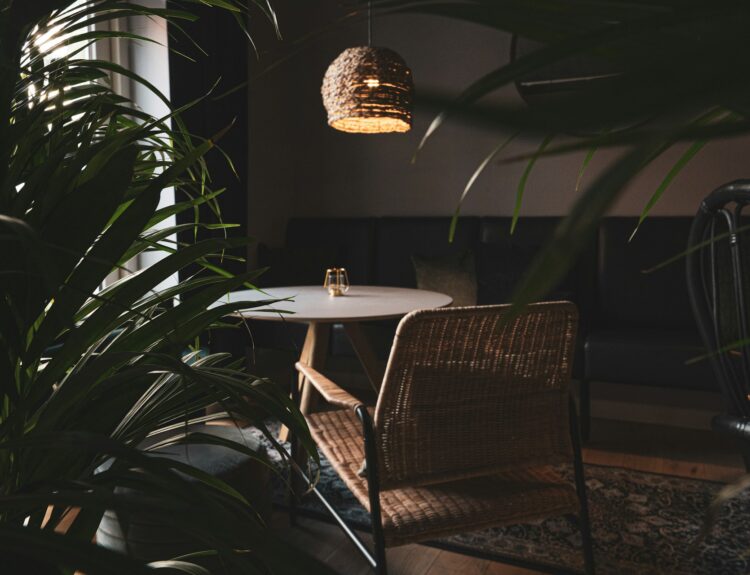The tiny house movement has captured imaginations worldwide, but its true power extends far beyond square footage.
While millions browse stunning 400-square-foot homes on social media, the real revolution lies in applying tiny living principles to create an intentional home and purposeful existence, regardless of your actual living space.
Tiny living represents more than downsizing—it’s a complete approach to lifestyle design that prioritizes function, beauty, and meaning over accumulation and excess.
Whether you live in a studio apartment or a sprawling suburban home, adopting this mindset can transform not just your physical environment but your entire relationship with possessions, space, and daily routines.
The principles that make tiny houses work—every item serves multiple purposes, beauty and function coexist seamlessly, and intentional choices replace impulse decisions—can revolutionize any living situation.
This approach creates space for experiences, relationships, and personal growth by eliminating the distractions and burdens that accumulate in our homes and lives.
Understanding the Psychology of Space and Simplicity
Physical environments profoundly impact mental clarity and emotional well-being. Research in environmental psychology shows that cluttered, disorganized spaces increase cortisol levels and cognitive load, while simplified, organized environments promote focus and reduce stress.
The Cognitive Load of Excess
Every object in your living space requires a small amount of mental energy to process, even when you’re not consciously aware of it.
Visual clutter competes for attention, making it harder to concentrate and easier to feel overwhelmed. Tiny living principles address this by ensuring every visible item has earned its place through usefulness or genuine emotional value.
This selective approach to possessions creates what researchers call “cognitive ease”—a mental state where less energy is required to process your environment, leaving more capacity for creativity, relationships, and meaningful activities.
Creating Psychological Safety Through Order
Well-organized, intentional spaces provide a sense of control and predictability that supports mental health. When your environment reflects your values and supports your goals, it becomes a source of psychological safety rather than stress.
The tiny living approach emphasizes creating this sense of order through thoughtful design choices rather than rigid minimalism. The goal is an environment that feels both peaceful and inspiring, supporting your best self rather than overwhelming you with options or obligations.
Functional Design: Making Every Element Work Harder
The hallmark of successful tiny living is maximizing function without sacrificing aesthetics. This principle applies equally to 200-square-foot tiny houses and conventional homes, focusing on intelligent use of space and resources.
Multi-Purpose Everything
In tiny houses, storage often doubles as seating, which doubles as sleeping space. This multi-functionality can be adapted to any home by choosing pieces that serve multiple roles.
Ottoman storage, dining tables that extend to workspace size, and furniture with built-in organization all reflect this principle.
The key is identifying your actual needs rather than presumed requirements. Many people discover they need far less specialized furniture and equipment when they prioritize versatility over single-purpose items.
Vertical and Hidden Storage Solutions
Tiny house designers excel at finding storage opportunities in unexpected places—under stairs, in wall cavities, and ceiling spaces. Conventional homes offer similar opportunities when viewed through this lens.
Wall-mounted shelving, over-door organizers, and furniture with hidden compartments can dramatically increase storage capacity without consuming floor space. The goal is to make storage invisible and accessible rather than prominent and cumbersome.
Zone-Based Living
Tiny houses succeed by creating distinct zones for different activities within a limited space. This concept translates beautifully to larger homes, where clear zones for work, relaxation, creativity, and social interaction can improve both function and psychological comfort.
Each zone should contain only items relevant to its purpose, with smooth transitions between different types of activities. This approach prevents spaces from becoming catch-alls while supporting focused engagement in different life areas.
Beauty Through Intentional Choices
Tiny living proves that luxury isn’t about quantity—it’s about quality and intentionality. Every design choice in a well-planned tiny house contributes to an overall aesthetic that feels both cohesive and personally meaningful.
The Power of Cohesive Design
Tiny houses maintain visual harmony through consistent color palettes, materials, and design themes. This principle creates homes that feel larger and more sophisticated than their square footage might suggest.
Applying this to any living space means choosing a limited palette of colors and materials that work together harmoniously. Rather than accumulating items in different styles over time, intentional home design involves curating pieces that contribute to a unified aesthetic vision.
Quality Over Quantity
With limited space for possessions, tiny house dwellers become experts at selecting items that offer exceptional quality and longevity. This selective approach often results in spaces filled with better-made, more beautiful objects than homes with unlimited storage.
This principle suggests investing in fewer, higher-quality items rather than filling space with adequate but uninspiring pieces. The result is often both more beautiful and more economical over time, as quality items last longer and provide greater satisfaction.
Personal Meaning in Every Choice
Successful tiny houses feel personal and reflective of their inhabitants’ values and interests. Every decorative choice matters when space is limited, leading to environments that tell clear stories about the people who live there.
This intentionality can transform any home by ensuring decorative elements reflect genuine interests and values rather than trends or expectations. The result is spaces that feel authentic and supportive of personal identity.
Lifestyle Design: Aligning Space with Values
The tiny house movement fundamentally challenges conventional assumptions about what constitutes “enough.” This questioning extends beyond physical possessions to examine how lifestyle choices align with personal values and goals.
Time Wealth Over Thing Wealth
Many tiny house dwellers report gaining time wealth—more hours for experiences, relationships, and personal growth—by reducing the time spent maintaining, organizing, and paying for excess possessions.
This principle applies regardless of home size. By being selective about possessions and commitments, you can create more time and mental space for activities that truly matter to you. The key is recognizing that every possession requires some amount of time and energy to maintain.
Environmental Consciousness Through Daily Choices
Tiny living naturally promotes environmental awareness through reduced consumption, energy use, and waste production. These environmental benefits often motivate people as much as the financial and lifestyle advantages.
Adopting this consciousness in any living situation involves considering the environmental impact of purchases, energy use, and waste production.
Simple changes like choosing durable goods, reducing energy consumption, and minimizing waste can create significant environmental benefits while often saving money.
Financial Freedom Through Intentional Spending
Tiny house living typically involves much lower housing costs, freeing up money for experiences, savings, or career flexibility. This financial freedom often enables people to pursue meaningful work rather than just high-paying work.
The underlying principle—spending intentionally on things that truly add value while avoiding expenses that don’t align with personal goals—can be applied regardless of housing choices.
This might mean spending more on quality items that bring genuine pleasure while spending less on things that provide little real value.
Movement and Mind Reset in Small Spaces
Even in compact living situations, incorporating movement and mental reset practices becomes crucial for well-being.
The aimless walking and movement therapy principles discussed in mental health research apply especially to tiny living situations where outdoor access becomes even more valuable.
Creating Movement Opportunities
Tiny house dwellers often develop creative approaches to incorporating physical activity into limited indoor space while maximizing outdoor time for movement and mental restoration.
This might include indoor yoga spaces, resistance band workout areas, or simply planning daily walks as essential rather than optional activities.
The key is recognizing that physical movement supports mental clarity and emotional regulation, making it a functional necessity rather than a luxury, even in the smallest living spaces.
Mind Reset Through Environmental Change
When your living space is compact, the mental reset benefits of stepping outside become even more pronounced. Regular transitions between indoor and outdoor environments can provide the environmental variety that supports cognitive function and emotional well-being.
This might involve establishing routines that include outdoor time, creating comfortable outdoor living spaces when possible, or simply being intentional about spending time in different environments throughout each day.
Practical Implementation Strategies
Adopting tiny living principles doesn’t require downsizing your home—it requires shifting your approach to possessions, space, and lifestyle choices.
The One-Month Assessment
Spend one month paying attention to which possessions, spaces, and activities you use and enjoy versus those that exist out of habit or assumption. This awareness provides the foundation for making intentional changes aligned with your actual preferences and needs.
Track which rooms you spend time in, which possessions you reach for regularly, and which activities bring genuine satisfaction versus obligation. This information reveals opportunities for simplification and optimization.
Gradual Implementation
Rather than attempting dramatic changes all at once, implement tiny living principles gradually. Start with one room or one category of possessions, applying the principles of function, beauty, and intentionality to create a model for other areas.
This gradual approach allows you to experience the benefits of each change while developing confidence in your ability to make decisions about possessions and space use.
Seasonal Reviews
Tiny house dwellers often conduct seasonal reviews of their possessions and space use, adapting to changing needs and preferences. This regular assessment prevents accumulation while ensuring their environment continues to support their evolving lifestyle.
Implementing quarterly or seasonal reviews of your living space and possessions can help maintain the intentionality that makes tiny living principles effective over time.
Creating Your Intentional Home
The tiny living mindset provides an inspiring framework for designing a lifestyle that aligns with your goals and values, no matter the size or location of your home. By focusing on function, beauty, and intentionality, you can create a space that reduces stress and enhances well-being.
Achieving this requires more than a one-time overhaul; it’s a conscious and ongoing process. Much like maintaining physical health, cultivating an intentional home involves consistent choices that either support or hinder your larger objectives.
But the benefits of tiny living go far beyond tidier spaces or better organization. Those who adopt its principles often experience improved focus, reduced stress, and enhanced life satisfaction. Many find they gain more time and energy for relationships and pursuing meaningful activities.
To get started, try small, manageable changes that reflect the principles of tiny living. Choose quality over quantity, prioritize multi-functional items, or design dedicated spaces for specific activities.
These initial changes will demonstrate the value of this approach, encouraging you to extend these practices to other areas of your home and life.
The true gift of the tiny house movement isn’t just cutting-edge design; it’s the powerful reminder that our surroundings shape our ability to lead meaningful, fulfilling lives.
By thoughtfully applying the principles of tiny living to your lifestyle design, you can transform your space into a solid foundation for the life you genuinely want to live.



